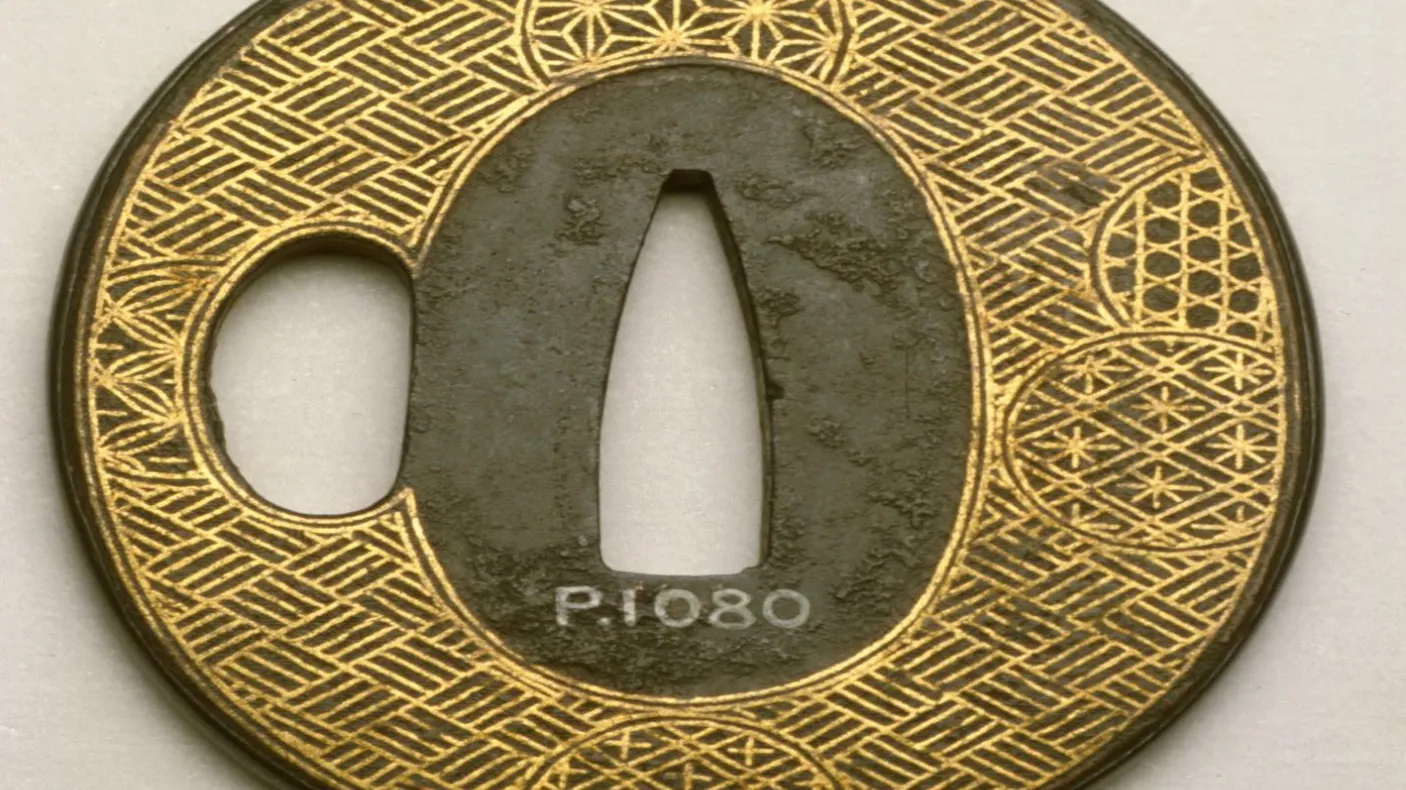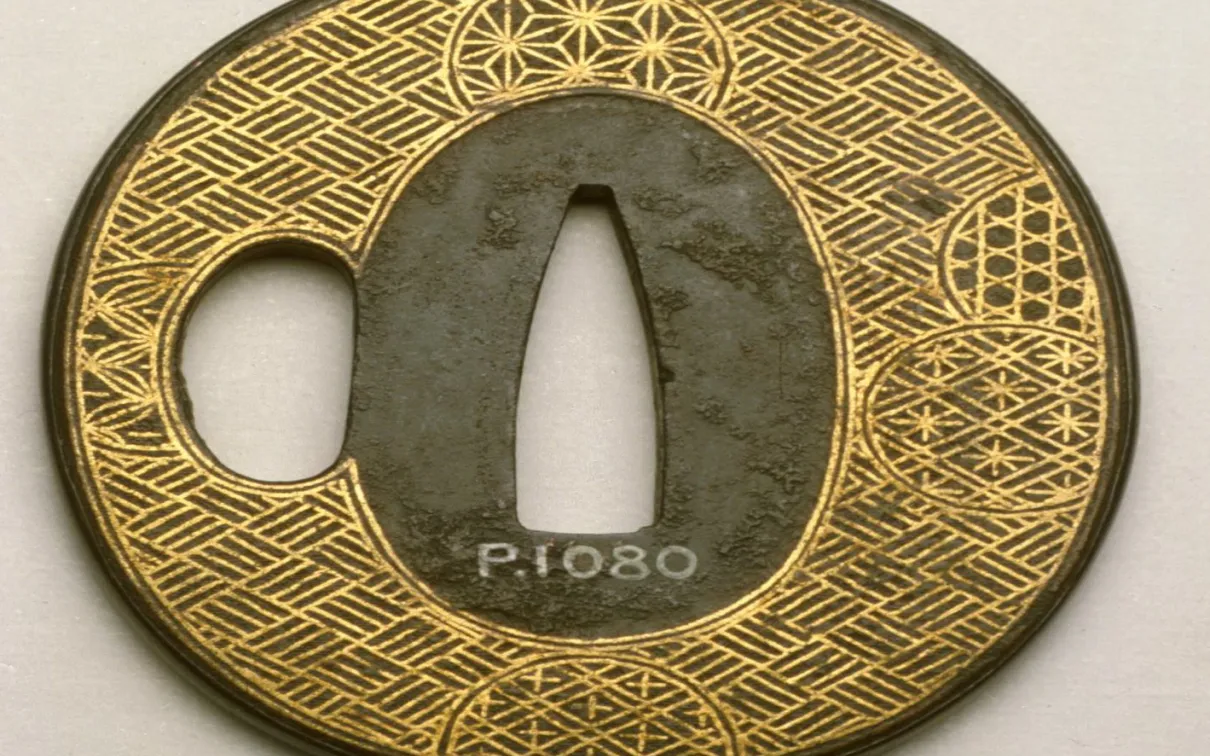The Japanese Art Collection of the ROM: A Look at Edo Period Tsuba
Published
Categories
Author
Blog Post
The Royal Ontario Museum (ROM) has a large collection of tsuba (sword guard): 278 pieces ranging from the 15th century to late 19th century, some of which are currently on display in Prince Takamado Gallery of Japan. The primary function of the tsuba is to protect the wielder’s hands by blocking the opponent’s sword during a fight but over time they also came to take on aesthetic values. Most of the tsuba in the ROM's collection are from the Edo period (1603-1868), which was governed by the Tokugawa Shogunate. Over the course of two and a half centuries, the Tokugawa Shogunate enforced various governmental policies aimed at subjugating every social class and solidifying the Shogunate's rule. Edo period tsuba in the ROM's Japanese Art Collection reflect the dynamic political and social landscape that were so characteristic of Japan's Edo period.
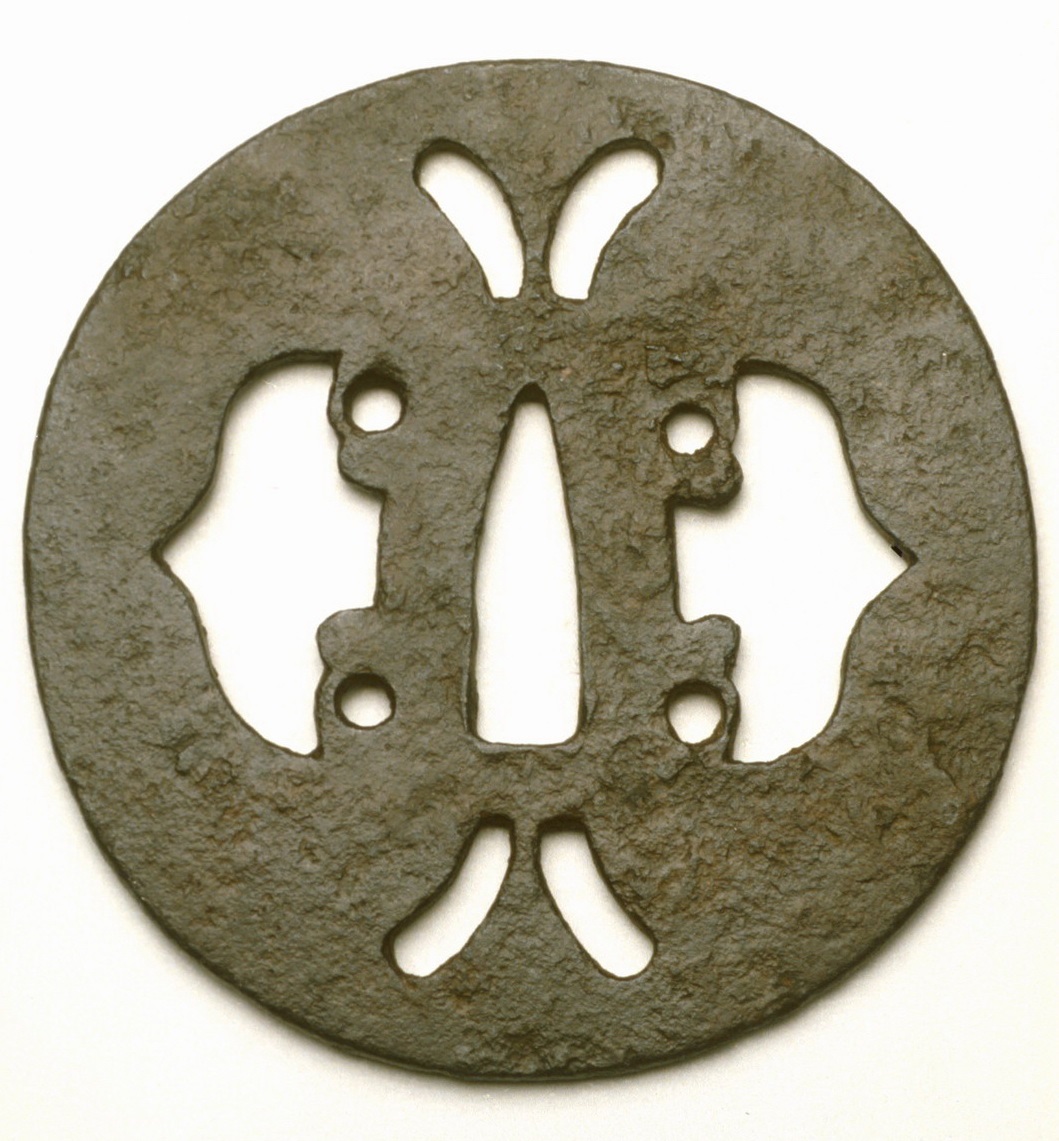
Figure 1: Ko-Sukashi Butterfly Tsuba; Iron; Japan; Muromachi period; 15th century; 924.31.11; Purchased from Shozo Kato, London; Height 8.3 cm; Width 8.2 cm (ROM photography)
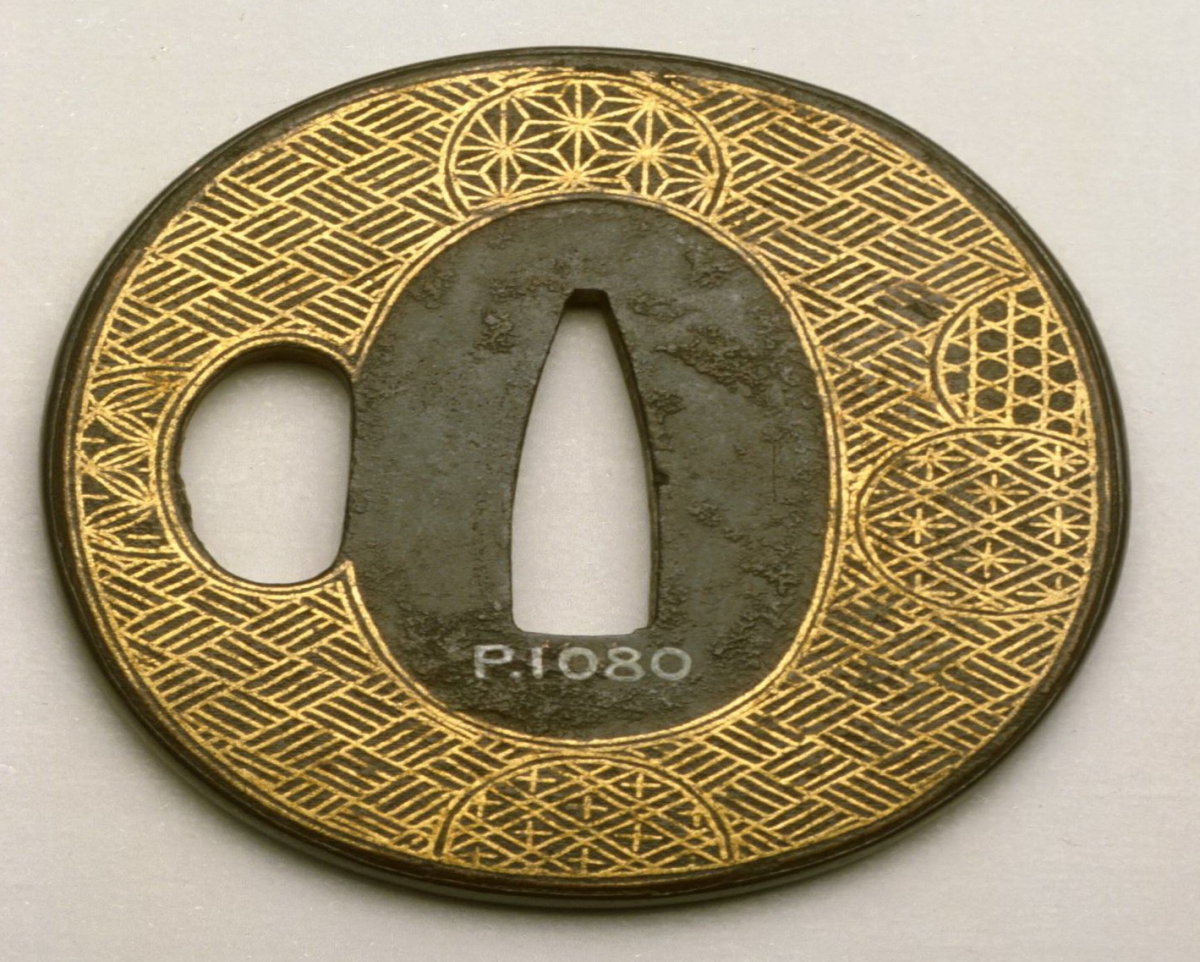
Figure 2: Tsuba with Ajiro (wickerwork) and Nunome zogan; metal; Japan; Edo period; 927.100.55; Purchased at Stevens Auction Rooms Ltd., London; Height 6.2 cm; Width 5.3 cm (ROM photography)
As with all objects of historical significance, it is important to look at early examples of the object to understand how it changed over time. The Ko-Sukashi Butterfly Tsuba (Figure 1) is one of the oldest tsuba in the ROM's collection dating back to the Muromachi period (1338-1573). This piece was made for practical reasons, hence its design is not overly complicated. Early smiths would use leftover iron from blades to make tsuba, which means the metal used was of high quality. The openwork butterfly design was popular because butterflies were believed to inhabit the heavenly universe. While an important function of tsuba was to aid the stability of the sword, the Edo period marked a trend in which they were increasingly treated as decorative objects. Feudal lords competed against one another in obtaining luxurious armors, including their tsuba. Tsuba with Ajiro and Nunome zogan at the ROM (Figure 2) is a beautiful example that attends more to the outlook of tsuba with extensive use of gold overlay. The design is a wickerwork pattern overlaid in gold using the nunome zogan technique.
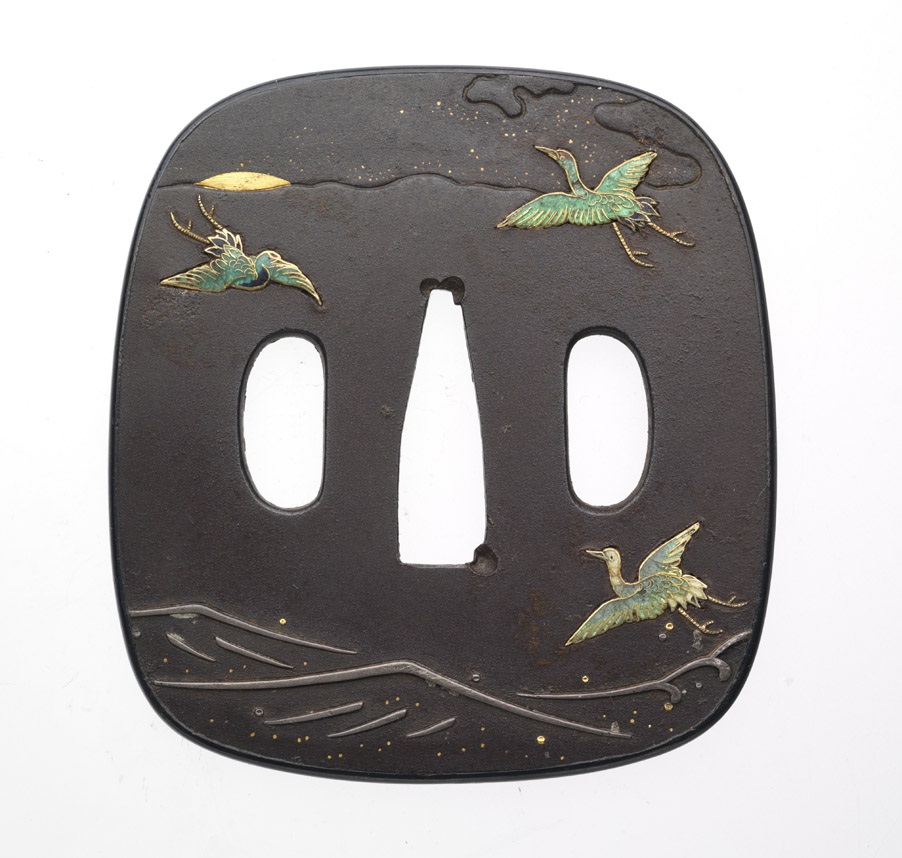
Figure 3: Tsuba with enameled cranes flying over silver waves; Shisatsu; Gold, silver, iron, shakudo and enamel inlays; Japan; 19th century; 927.83.25; Purchased from G.F. Lawrence, London; Height 7.1 cm; Width 6.6 cm (ROM photography)
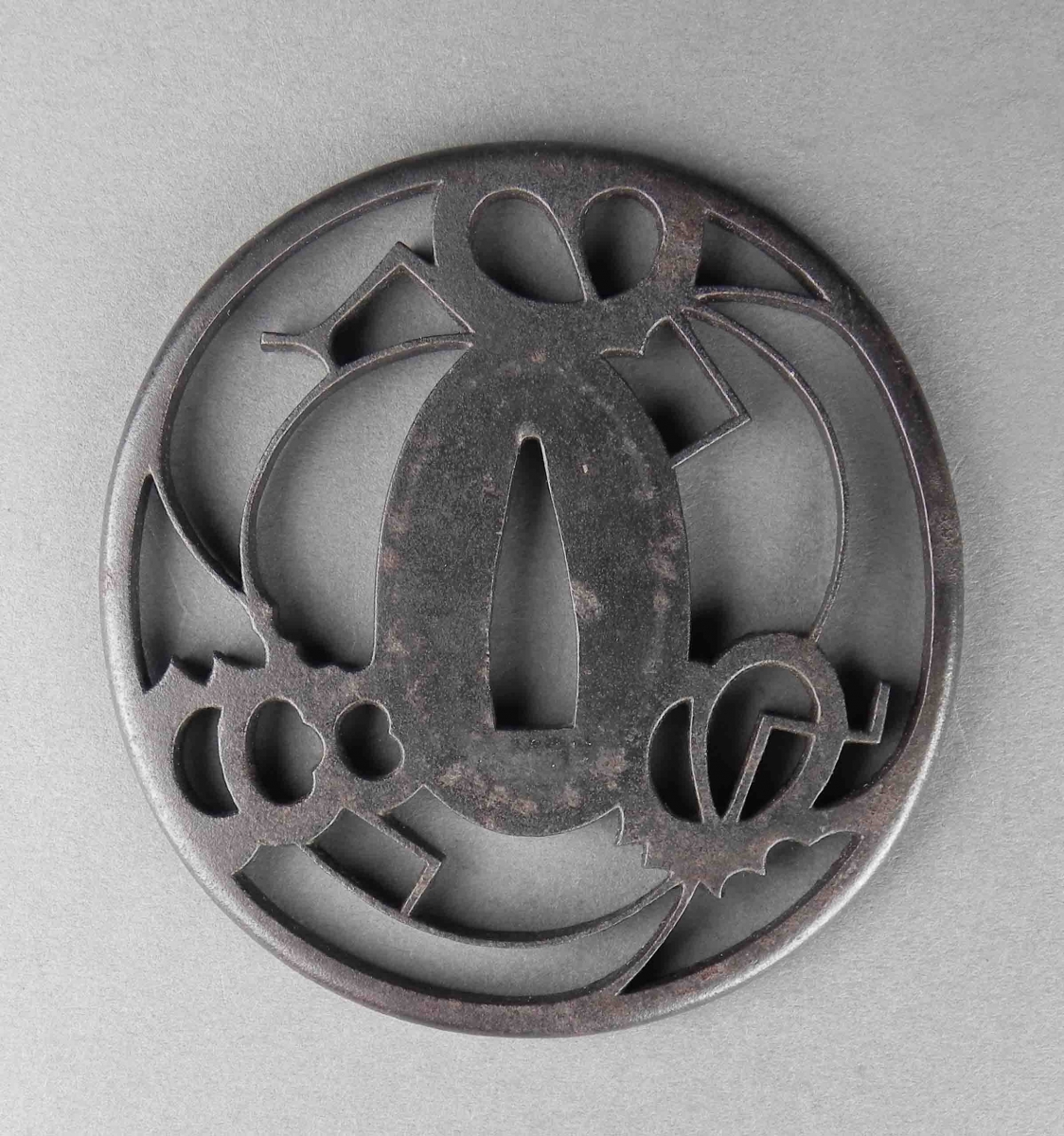
Figure 4: Akasaka tsuba with bell insects; Iron; Japan; Edo period; ca. 1800; 927.83.49; Purchased from G. F. Lawrence, London; Height 7.6 cm; Width 7.4 cm (ROM photography)
It is vital to understand Japanese symbolism in our examination of some works, such as Tsuba with Enameled Cranes Flying Over Silver Wave (Figure 3) from the Edo period. The Heian period (794-1192) literature, The Shikashu includes one verse that touches upon the crying crane in the capital longing for its children: the crane is a metaphor for the loneliness of the traveler missing his home and family. Under the rule of the Tokugawa Shogun the feudal lords were required to send their wives and children to live permanently in Edo. The feudal lords themselves were required to live in, and travel to Edo for a required duration. The Edo period might be separated from the Heian period politically, culturally and temporally but the imagery of the cranes flying near the shoreline would be the same scene witnessed by both Edo and Heian period aristocrats travelling along the coastline and away from their family.
A type of tsuba that was tremendously popular during the Edo period is Akasaka tsuba, a tsuba with pierced decoration. Feudal lords who temporarily stayed in Edo frequently purchased this type as a souvenir. Akasaka Tsuba with Bell Insects (Figure 4) furthermore reflects the intellectual culture of the samurai class. Bell insects are known as Suzumushi in Japanese. They were frequently used in poetry for their homophonic value and association with romance. “Suzu” in Japanese means bell and these insects were kept in Japanese homes during the autumn season for their enjoyable chiming bell sound. The insects usually began their singing in the evening- a time associated with decline or ending.
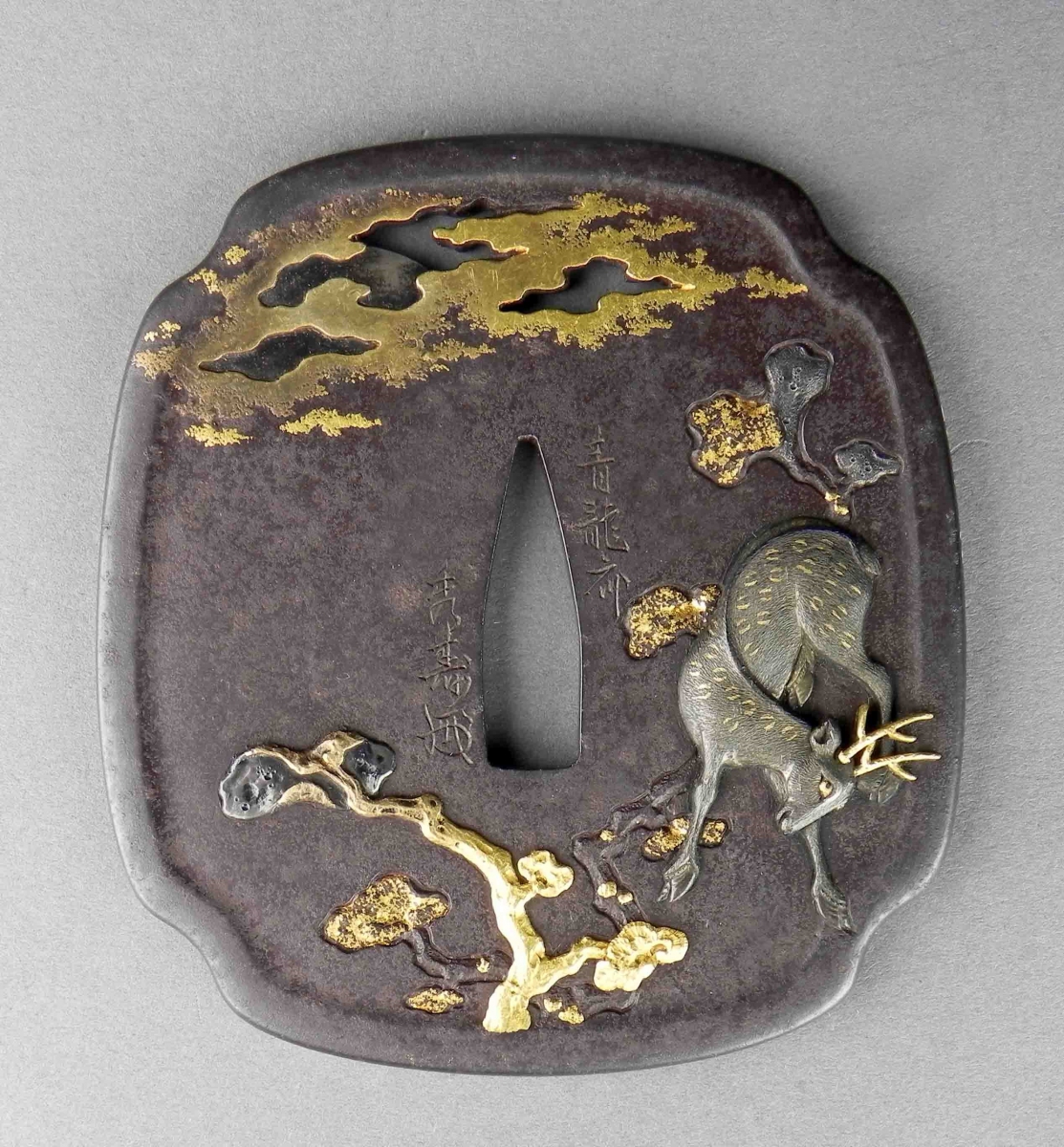
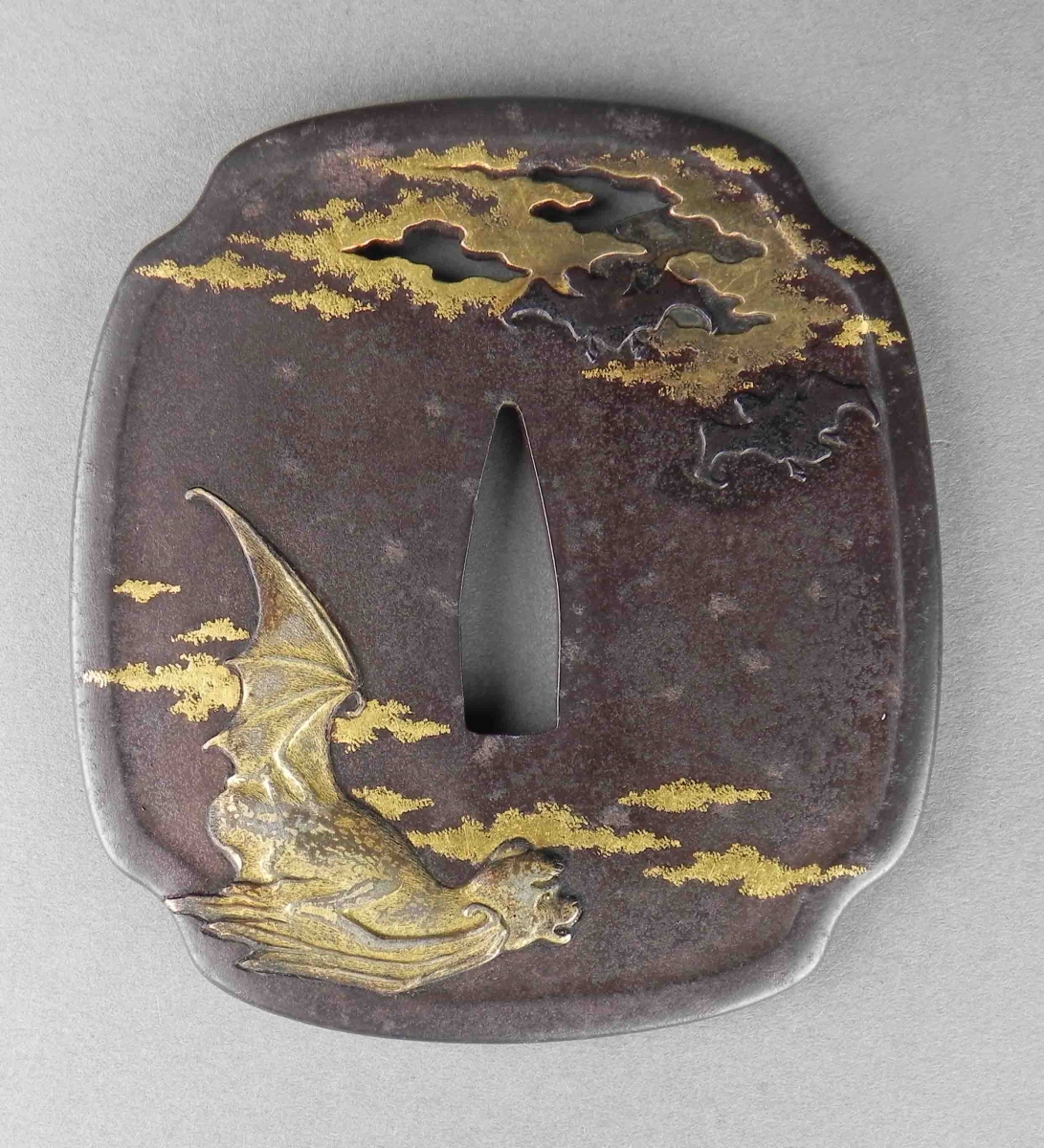
Figure 5: Tsuba with a deer, fungus of immortality, and bats; Seiryusai & Hidetoshi; Dark brown iron with chiseled & applied decoration with copper, gold shibuichi, silver, & shakudo; Japan; Edo period; 19th century; 927.83.16; Purchased from G.F. Lawrence; London; Height 8.5; Width; 7.8 cm (ROM photography)
The Tokugawa Shogunate’s rule appeared rigid and oppressive. According to the structure of social class during the Edo period, merchants and foreigners were often viewed with disdain and suspicion but these tsuba indicate that in reality things may have been different. Tsuba with a deer, fungus of immortality, and bats (Figure 5), is heavily gilded with gold and was manufactured in the style of the Omori School, a subcategory of the machi bori. The machi bori's significance stems from the fact that it was made for a different group of clientele than the traditional samurai: the newly rich merchant class. Although their position in society was lowly, the merchants took advantage of the economic stability of the Edo period and gained immense wealth. The merchant class could then afford to purchase these beautiful and expensive tsuba which served as status symbols.
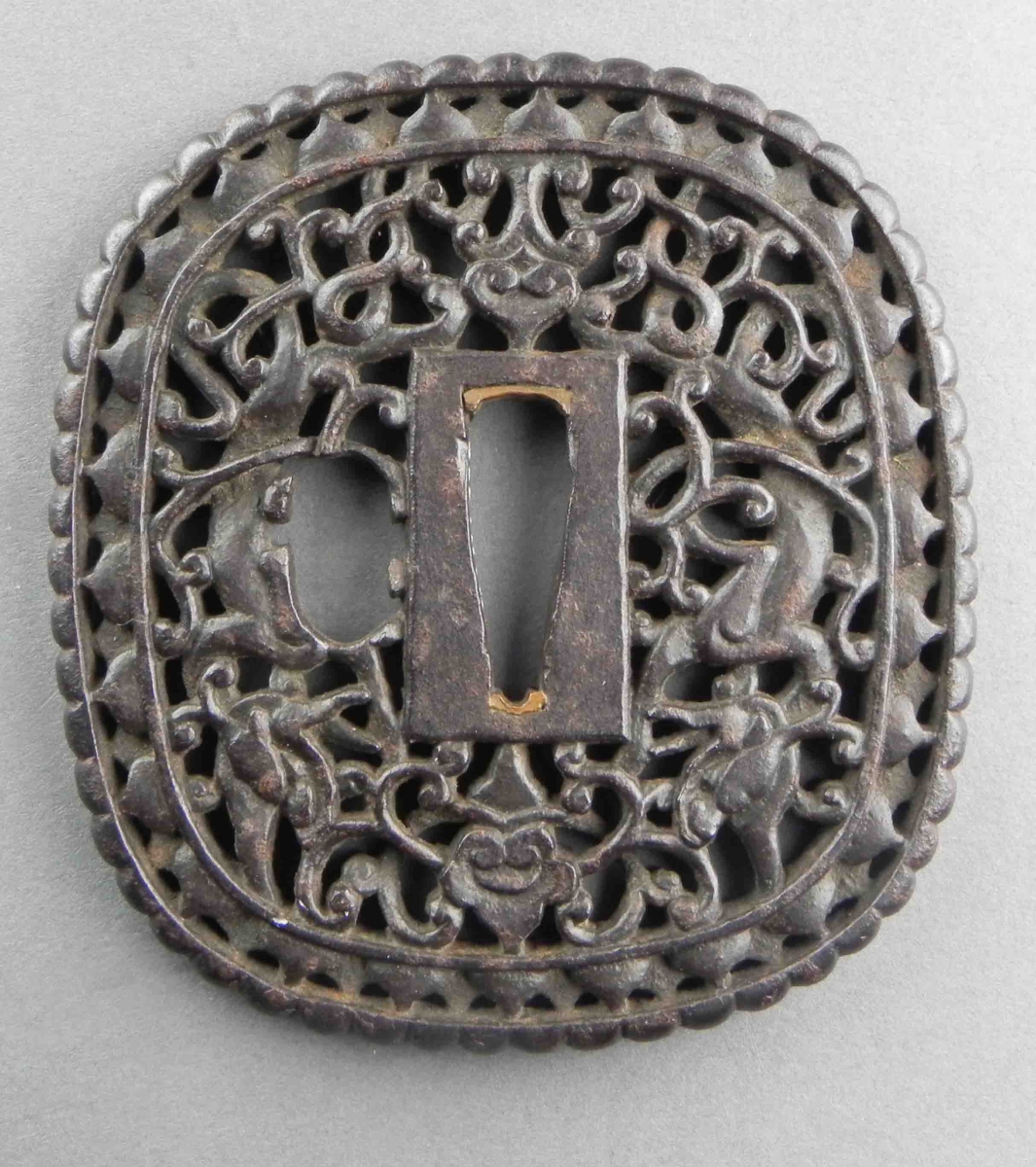
Figure 6: Openwork tsuba with two dragons; Japan; 907.11.2; Purchased from P. Kyticas, Cairo; Height 8.6 cm; Width 7.9 cm (ROM photography)
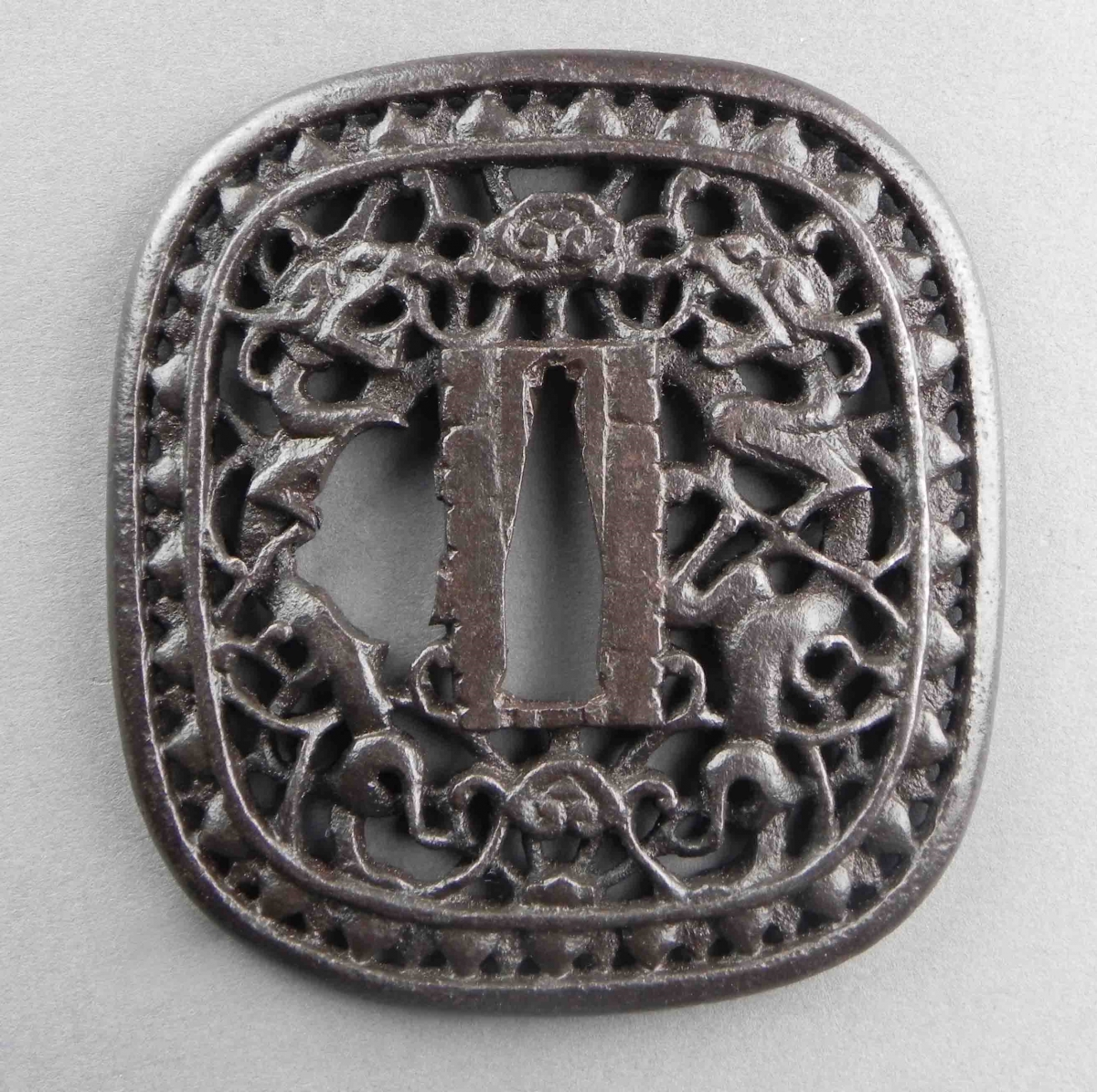
Figure 7: Openwork tsuba with two dragons; Iron; Japan; 927.100.6; Purchased from Steven Auction Rooms Ltd.; Height 8.5 cm; Width 7.9 cm (ROM photography)
Japan’s relationship with foreigners during the Edo period has been frequently perceived in an unfavorable light. After 1639, Japan adopted national seclusion, which meant foreign trade was restricted to the Nagasaki port. Although interaction between Japan and the rest of the world was limited to trade, it did not stop ideas and different aesthetic values from entering Japan. The term “namban” was originally a Chinese word used to describe all outsiders and was later adopted in Japan. There have been debates on the different stylistic origins of Namban tsuba; whether it came from China or Portugal is unclear. Perhaps it is not too far-fetched to say that tsuba smiths adopted both European and Chinese elements into their designs. A popular subject for Namban tsuba is two opposing dragon entwined in tendrils hunting for the Sacred Jewel. Two Namban tsuba in the ROM's collection (Figure 6 & 7) exemplify this myth. The dragons appear almost hidden in the elaborate tendril designs inspired by patterns of European Baroque and Rococo.
The rule of the Tokugawa Shogunate oversaw great changes to the socio-economic structure of Japan. The tsuba in the ROM's Japanese Art collection offer unique insights of the Shogun's vision in ruling Japan. They are visually exquisite artifacts that offer modern viewers the rare opportunity to observe the aesthetic values that were so highly esteemed in the Edo period and to perhaps, if just for a moment, step back in time and experience an exciting period of history.
This blog was prepared by Su Yen Chong, an Art History undergraduate student at the University of Toronto and an intern at the ROM, under the supervision of Dr. Asato Ikeda.
